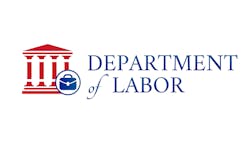The Biden administration is advancing its campaign to promote labor unions through joint actions of federal agencies with a new memorandum of understanding (MOU) between four top regulatory agencies to inject labor issues into the government approval process for corporate mergers and acquisitions (M&A) that fall under their jurisdictions.
The agencies are the Antitrust Division of the Department of Justice (DOJ), the Federal Trade Commission (FTC), Department of Labor (DOL), and National Labor Relations Board (NLRB). Since 2022, the same signatories to the Aug. 28 MOU agreement have signed five similar agreements backing up their commitment to cooperate on labor issues.
The FTC announcement of the new MOU said the new pact is intended “to enhance existing agreements by outlining new measures to help ensure all relevant and appropriate information and expertise provided by DOL and NLRB, as the labor agencies, can be used by the FTC and DOJ in their review of mergers and acquisitions.”
The DOL and NLRB agreed to promptly meet with the FTC and DOJ when requested and provide technical assistance, along with information and data, along with training on these issues. More specifically, the NLRB will train personnel from the agencies responsible for enforcing antitrust law on the duty of employers to bargain in good faith with unions, successor company bargaining obligations, and unfair labor practices, among other topics—supposedly so they can identify potential violations of labor law that could be used to stymie a particular merger or acquisition.
The operative theory behind these actions is that labor issues are in fact competitive issues, and as such deserve to be weighed as significant factors in these deliberations.
Explaining his agency’s commitment to the new MOU, Assistant Attorney General Jonathan Kanter of the Justice Department’s Antitrust Division explained, “Competition in labor markets means higher wages, better working conditions, and more opportunities for workers and their families.”
The MOU “will keep building on our whole-of-government efforts to ensure that all Americans can get a fair shot in our economy, free from unlawful coercion,” offered FTC Chairman Lina M. Khan, who has led the way in trying to involve the FTC in labor issues, arguing that they represent the kind of competitive factors that justify her agency’s jurisdiction over them.
In agreement with Khan was NLRB General Counsel Jennifer Abruzzo, who has led the board’s attempts to expand its jurisdiction since Joe Biden became President. “We’re thrilled to be partnering with the antitrust agencies to enhance their ability to obtain important information on the potential effects of mergers on workers,” she said.
“It’s critical that the impact on workers and the labor market are given due consideration when analyzing mergers and acquisitions,” pronounced Acting Secretary of Labor Julie Su. “We look forward to deepening our work to protect workers by promoting fair competition in the labor markets.”
Competitive Factors Focus
Those involved in corporate mergers and acquisition activity have already been warned to watch out for any lingering liabilities stemming from enforcement activities conducted by the Occupational Safety and Health Administration (OSHA), which is part of the DOL.
Kahn also noted that the FTC has taken steps to protect competition in labor markets through merger enforcement actions, including the commission’s challenge of grocery retailer Kroger Company’s acquisition of the Albertsons Companies. The FTC and NLRB also have worked together to identify potential independent contractor abuse by parties to mergers.
Earlier this year the commission issued a rule banning employers from imposing noncompete agreements on their employees, but enforcement of that was blocked by a federal court where its legality is being challenged. However, even in the absence of a general rule, the FTC in recent years has required firms to eliminate noncompetes for thousands of workers as part of commission orders that it has directed at individual companies, Khan pointed out.
The antitrust enforcement agencies also have chosen to focus on labor issues in the past, including the DOJ’s aggressive criminal prosecution of alleged no-poach and wage-fixing agreements between some employers, stressed attorneys John Carroll and Ann O'Brien of the law firm of Sheppard, Mullin, Richter & Hampton.
“The agency cooperation and information sharing contemplated under these MOUs likely will put more government eyes on employers and potentially more documents in the hands of the antitrust agencies, which could slow merger review and lead to additional civil and criminal antitrust investigations,” they add. “Merging parties before the antitrust agencies and those engaging with the NLRB should be aware of this inter-agency cooperation and beware that their documents and information could spawn antitrust investigations.”
Attorney Daniel Doron of the Jackson Lewis law firm issued a similar warning to management. Companies undergoing, or contemplating, mergers or acquisitions that are subject to review of competitive factors “should be cognizant that the antitrust agencies conducting those reviews have made plain their interest in the workforce effects of such transactions.”
Last year, the FTC proposed adding significant workforce-related disclosures to the Premerger Notification and Report Form (PNRF) filed by parties in connection with the antitrust review stage of mergers and acquisition approvals. Also shared by DOL’s Bureau of Labor Statistics will be information regarding business employment dynamics, which covers job gains and losses defined by geography and industry type.
Doron believes that employers also can expect that information shared by the NLRB with DOJ and the FTC will include reports concerning union representation case activity as well as unfair labor practice charges and any related board decisions.
Although it has gathered public comments about the proposed PNRF regulation, Doron notes that the commission has yet to indicate a timeframe for issuing the final rule.
About the Author

David Sparkman
founding editor
David Sparkman is founding editor of ACWI Advance (www.acwi.org), the newsletter of the American Chain of Warehouses Inc. He also heads David Sparkman Consulting, a Washington D.C. area public relations and communications firm. Prior to these he was director of industry relations for the International Warehouse Logistics Association. Sparkman has also been a freelance writer, specializing in logistics and freight transportation. He has served as vice president of communications for the American Moving and Storage Association, director of communications for the National Private Truck Council, and for two decades with American Trucking Associations on its weekly newspaper, Transport Topics.
